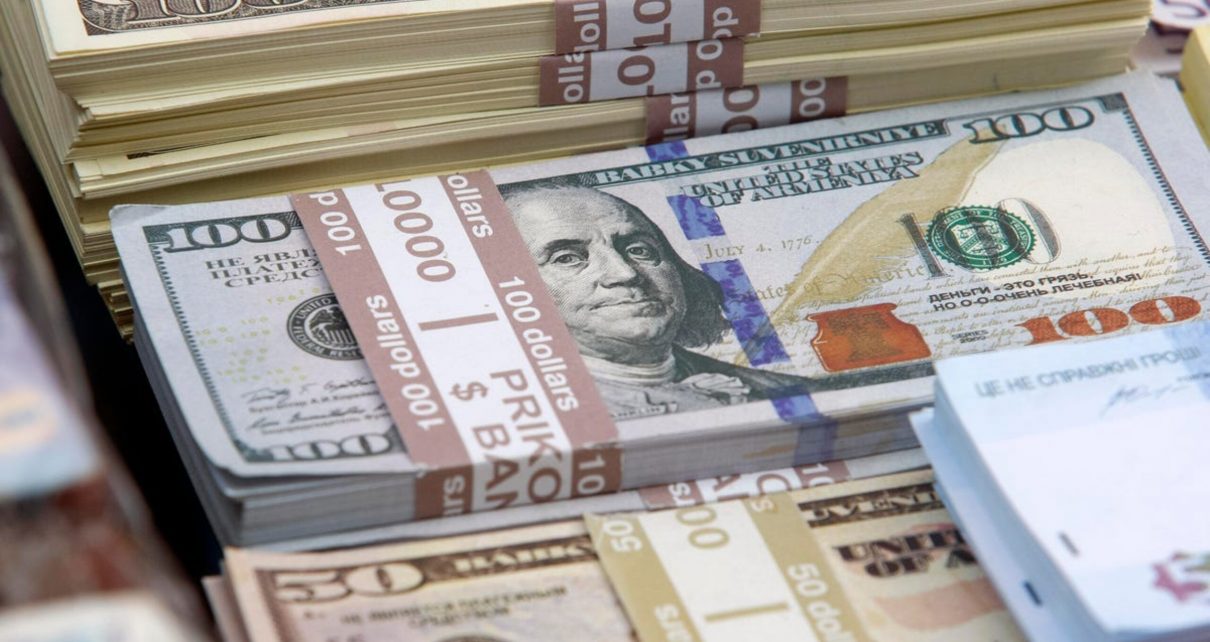The U.S. dollar exhibited strength against a basket of currencies on Tuesday, buoyed by a flurry of fresh economic data underscoring the robustness of the U.S. economy compared to the United Kingdom and the European Union.
S&P Global reported an uptick in U.S. business output for October, with the manufacturing sector pulling itself out of a five-month contraction due to a surge in new orders. Furthermore, services activity showed moderate acceleration, and signs of abating inflationary pressures emerged.
This latest data reaffirms the U.S. economy’s resilience amid the surge in interest rates driven by the Federal Reserve’s proactive measures against inflation.
The dollar index, which measures the currency’s strength against a basket of six major counterparts, rose by 0.6% to 106.27. It had previously hit a one-month low of 105.35 during the session.
Helen Given, an FX trader at Monex USA, emphasized the broader perspective, stating, “The big picture still clearly remains intact, especially when you compare U.S. PMI to the concurrent releases out of the UK and the euro zone this morning.”
She further pointed out, “While all three PMI readings for the U.S. (manufacturing, services, and composite) were positive, both the UK and the euro zone showed contractions, re-emphasizing the continuing resilience of the larger U.S. economy in comparison to its peers around the world.”
Earlier in the day, euro zone business activity exhibited an unexpected downturn this month, indicating a widespread decline across the region, potentially hinting at an impending recession.
In light of these developments, the euro declined by 0.8% to $1.0588. German data, in particular, painted a bleak picture, with the service sector joining the manufacturing sector in contractionary territory.
Looking ahead, the Bank of England is set to make interest rate decisions next week after the Federal Reserve’s verdict. Meanwhile, the European Central Bank is concluding its meeting this Thursday, and market expectations are leaning toward all three central banks maintaining steady interest rates.
Capital Economics global economist Ariane Curtis remarked, “The October flash PMI surveys suggest that economic activity got off to a weak start in Q4, especially in Europe. And with weak activity taking some of the steam out of labor markets and inflation, we are growing more confident in our view that the Fed, ECB, and Bank of England are done hiking policy rates.”
Recent financial markets have been rattled by surging U.S. bond yields, with the 10-year Treasury yield exceeding 5% on Monday, reaching its highest point since July 2007. This surge in yields elevated the dollar index to almost a one-year high earlier this month.
However, yields sharply retreated on Monday, with hedge fund investor Bill Ackman’s social media message, announcing the closure of his bet against longer-dated bonds, being one contributing factor. Geopolitical concerns also played a role, as yields exhibit an inverse relationship with bond prices.
The dollar remained 0.1% higher against the yen at 149.91, with traders cautiously monitoring the possibility of government intervention to bolster the Japanese currency.
In the same vein, the British pound dipped by 0.72% to $1.2161, as surveys revealed declining activity in Britain’s businesses this month, coupled with eased cost pressures, underscoring the looming risk of a recession.
In the realm of cryptocurrency markets, bitcoin continued its ascent, fueled by speculation surrounding an impending exchange-traded bitcoin fund. The world’s largest cryptocurrency, by market capitalization, surged by 2.4% to $33,850.



